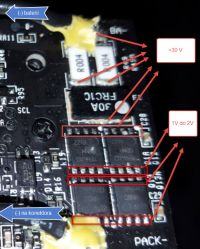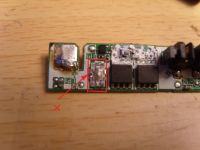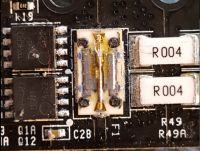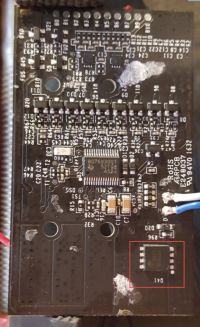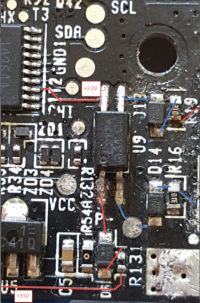Hello
I have a 33V, 30A lithium ion battery with a (most likely) damaged BMS module. It consists of 9 flat cells. The voltage on the battery cells (together) = 32V. Each of the cells individually has about 3.5V. For some reason, the BMS cuts them off and won't let the battery charge.
BMS model: SSHHD96-1-REV3
BMS dimensions: 65x40mm
(photo attached)
Initial measurements:
- charger voltage at PACK- and (+) battery terminal = 42V (without 1.6V charger)
- voltage between (+) battery and BA- = 32V
- all voltages from the cells go to the BMS (resistors R37 to R71)
- Low-impedance resistors (R49 and R49A) look good (32V)
- element (F1) marked FRC1C 30A has no voltages.
Does anyone know what this item is? I guess it's an SMD fuse, but I don't find anything specific under those markings.
Could someone please answer the following questions for me:
1. Is it possible to somehow diagnose and repair a damaged element in such a small BMS, I would ask for any tips for further diagnosis?
2. What is the replacement for this BMS (PCB dimensions 65x40mm are critical)?
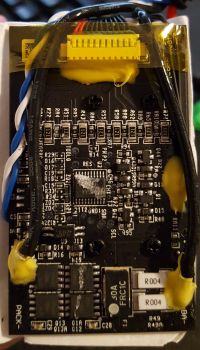
I have a 33V, 30A lithium ion battery with a (most likely) damaged BMS module. It consists of 9 flat cells. The voltage on the battery cells (together) = 32V. Each of the cells individually has about 3.5V. For some reason, the BMS cuts them off and won't let the battery charge.
BMS model: SSHHD96-1-REV3
BMS dimensions: 65x40mm
(photo attached)
Initial measurements:
- charger voltage at PACK- and (+) battery terminal = 42V (without 1.6V charger)
- voltage between (+) battery and BA- = 32V
- all voltages from the cells go to the BMS (resistors R37 to R71)
- Low-impedance resistors (R49 and R49A) look good (32V)
- element (F1) marked FRC1C 30A has no voltages.
Does anyone know what this item is? I guess it's an SMD fuse, but I don't find anything specific under those markings.
Could someone please answer the following questions for me:
1. Is it possible to somehow diagnose and repair a damaged element in such a small BMS, I would ask for any tips for further diagnosis?
2. What is the replacement for this BMS (PCB dimensions 65x40mm are critical)?






